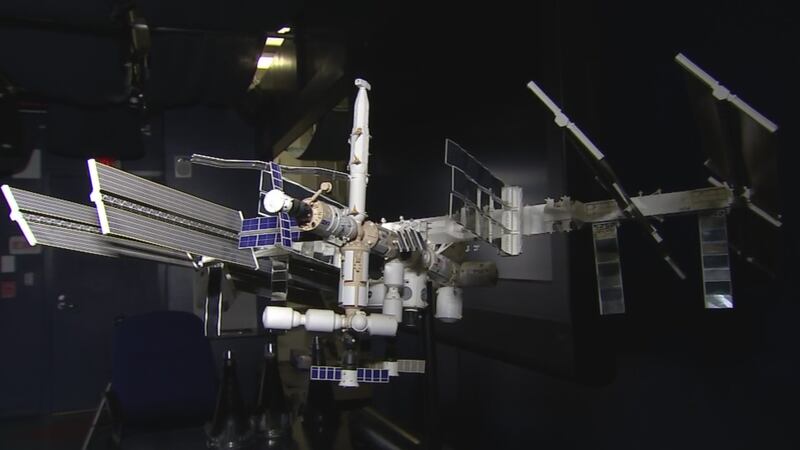PITTSBURGH — It appears that two decommissioned satellites over Pittsburgh did not collide Wednesday evening.
Initially, scientists said there was a one in 100 chance of a collision and was updated to a one in 20 chance, but Leolabs said their latest data show “no evidence of new debris.”
Thankfully our latest data following the event shows no evidence of new debris. To be sure, we will perform a further assessment upon the next pass of both objects over Kiwi Space Radar occurring later tonight.
— LeoLabs, Inc. (@LeoLabs_Space) January 30, 2020
Leolabs said they will continue to monitor data that comes in to be sure the two satellites did not collide in space.
Around 6 p.m., Leolabs released the final update and projections of what the satellites will do. They predicted that they would miss by approximately 47 meters (154 feet), but the actual distance is still unclear.
Final update prior to close approach: 47 meter predicted miss distance, w/ increased separation in the cross-track direction. Next scheduled radar passes for both objects to occur approximately two hours after the event. pic.twitter.com/Y07Rh9dR26
— LeoLabs, Inc. (@LeoLabs_Space) January 29, 2020
Leolabs said even though it’s unlikely the satellites collided, they have radars to schedule longer tracking on both of them to search for evidence of new debris.
One is an infrared telescope from NASA and the other is an Air Force experimental satellite. Officials said they could have come within 40 feet of each other 560 miles directly over the city.
LeoLabs’ initially released the information Monday, which showed overlapping tracks between a decommissioned space telescope and an experimental government payload.
1/ We are monitoring a close approach event involving IRAS (13777), the decommissioned space telescope launched in 1983, and GGSE-4 (2828), an experimental US payload launched in 1967.
— LeoLabs, Inc. (@LeoLabs_Space) January 27, 2020
(IRAS image credit: NASA) pic.twitter.com/13RtuaOAHb
The older satellite, known as GGSE-4, was launched in 1967 by the U.S. military from Vandenberg Air Force Base in California. It is quite small and weighs only 10 pounds, but is reported to be attached to a larger satellite, only recently declassified, called Poppy 5. Poppy 5 has 18-meter-long booms and an additional weight of 187 pounds, according to astronomer Jonathan McDowell.
Launched in 1983 from Vandenberg Air Force Base in California, the larger satellite is much larger and called IRAS. IRAS is the first infrared telescope in orbit. IRAS is credited with leading to the discoveries of six new comets, the core of the Milky Way galaxy and a deeper understanding of the stars Vega and Fomalhaut.
The NASA/NIVR IRAS satellite and the NRO/USN POPPY 5B satellite (aka GGSE 4) are predicted to make a close approach on Wednesday. POPPY 5B has 18-metre-long gravity gradient booms so a 15-to-30 metre predicted miss distance is alarming https://t.co/H1UckcoaAH
— Jonathan McDowell (@planet4589) January 27, 2020
After a 10-month mission, IRAS exhausted its fuel supply and has been drifting in low earth orbit ever since. IRAS is 11.8 by 10.6 by 6.7 feet and weighs nearly 2,400 pounds.
Channel 11′s Danielle Dozier spoke with David Turnshek, director of the Allegheny Observatory, Turnshek said if a collision happened it would be compared to a small shopping cart hitting a car and if it’s clear and you’re away from light pollution, you can look overhead and possibly see a faint light to the unaided eye.
You might be able to hear a sonic boom, Turnshek said. Otherwise, the collision would result in debris in space.
The first and last time two satellites collided at a very high velocity was in 2009 over Siberia. Sonic booms were reported days later in Kentucky. Others in Texas reported a meteor, but it was deemed to be debris re-entering the atmosphere.
TRENDING NOW:
Here is an illustration of an earlier model of the series (POPPY 4D) with the booms extended. pic.twitter.com/gOFHEN6hR5
— Jonathan McDowell (@planet4589) January 28, 2020
Space archaeologist Alice Gorman, of Flinders University, told Science Alert there was no danger to anyone on the ground in the event the collision happens and any debris would burn up in the atmosphere during re-entry.
© 2020 Cox Media Group







